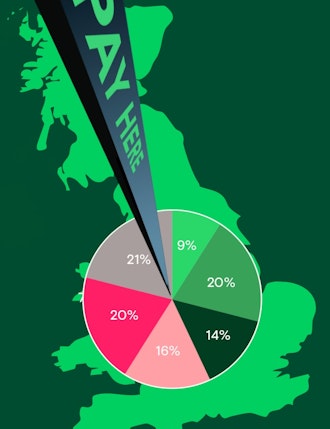Key Insights
-
Machine learning in payments allows providers to detect and prevent fraud in real time by analyzing vast volumes of transaction data for unusual behavior.
-
Unlike static rules, transaction fraud detection using machine learning adapts and improves continuously, reducing false positives and catching sophisticated attacks.
-
Use cases range from online payment fraud detection in e-commerce to fraud detection in banking using machine learning, with benefits across customer experience and risk reduction.
-
Machine learning helps payment enablers improve merchant trust, reduce chargebacks, and support scalable, secure payment infrastructure.
- Aevi’s cloud-based platform integrates with intelligent fraud tools, offering payment providers the flexibility to innovate without compromising on security or compliance.
Don't have time to read more now? Sign up to our newsletter to get the latest insights directly in your inbox.
We all know how fast and convenient digital payments have become. But as Newton famously said, “every action has an equal and opposite reaction”, and in this case, fraud has evolved just as quickly. Smarter, faster, and more sophisticated threats are testing the limits of traditional, rule-based fraud systems, and many providers still relying on these legacy systems are falling behind.
That’s where machine learning (ML) steps in. It’s quietly transforming how we detect fraud and assess risk, working hard in the background to keep transactions secure, and adapting in real time as threats emerge.
To get a better grasp of this, let’s explore how machine learning in payments is transforming fraud prevention. Let’s also take a look at how machine learning helps to enhance customer experience, all the while helping payment enablers and merchants evolve. If you’re still relying on static rules and outdated systems, this could be the one of the most important things you read today…
What is machine learning in payments?
Machine learning is a branch of artificial intelligence that allows systems to learn from data and improve over time without being explicitly programmed. In the context of payments, ML algorithms can analyze huge volumes of transaction data in real time to detect patterns and spot anomalies, flagging suspicious behavior often before fraud even occurs.
Think of machine learning like a rule-based system - the kind still found in many legacy payment platforms - as a locked front door. It’s a basic, one-size-fits-all defense. It works…until someone figures out how to pick the lock.
Machine learning, on the other hand, is more like a smart security system. It locks the door and learns from every attempt to open it. It recognizes unusual behavior and adapts to new break-in tactics, thus tightening your defenses every time something suspicious happens.
And where does this live within the payment ecosystem? Typically, machine learning is embedded in the fraud detection layer of the payment stack. It can be part of a third-party service or built directly into a platform like Aevi’s, and in particular our cloud-based integration layer. It monitors transactions in real time as they move through the system - from the customer to the merchant, through the acquirer and gateway - flagging fraud without slowing anything down.
So while your merchants see fast, frictionless payments, machine learning is working behind the scenes to make every transaction smarter and safer.
Why machine learning is key to fraud detection
Traditional fraud detection systems (rule-based) rely on predefined rules - “flag a transaction over X amount” or “block payments from specific locations.” But fraudsters have become more agile, frequently testing and working around these rules. ML systems, on the other hand, continuously learn from historical and live data to recognize unusual activity, even if it doesn’t fit a predefined pattern.
Here’s a handy visual to see the difference between rule-based and machine learning systems:
This is where payment fraud detection using machine learning is gaining traction, particularly among payment service providers and banks.
Benefits of using machine learning for fraud detection:
- Real-time analysis: Analyze and flag transactions in milliseconds. Whether it’s spotting unusual login times or flagging unexpected geolocations in online payment fraud detection, ML responds faster than any rule-based system ever could.
- Adaptive learning: ML systems evolve with new fraud patterns. From transaction fraud detection using machine learning to fraud detection in banking, algorithms continuously refine their accuracy with every data point.
- Fewer false positives: Reduce friction for genuine customers. In e-commerce, for example, machine learning models factor in purchasing behavior, device fingerprinting, and timing to avoid blocking legitimate transactions, improving the customer experience without weakening security.
- Scalability: Handle millions of transactions without manual intervention. Whether you're enabling real-time machine learning in banking or managing fraud detection across digital wallets and BNPL, ML can keep up with transaction growth without compromising performance.
Machine learning turns fraud prevention from a defensive cost into a competitive advantage, helping you stay ahead of increasingly complex threats while building trust where it matters most.
Why this matters to payment enablers and ISVs
Fraud prevention used to be something you layered on top of your platform. Now, it needs to be built in - intelligent, dynamic, and invisible to the customer. For payment enablers, integrating machine learning into your fraud stack can improve merchant retention, reduce chargebacks, and future-proof your offering.
At Aevi, we understand that flexibility and security need to go hand in hand. That’s why our cloud-based in-person payment platform is designed to integrate with advanced fraud detection tools and third-party services, giving you the freedom to innovate without compromising on compliance or security.
The future of fraud prevention is predictive
As fraud tactics become more advanced, prevention strategies need to go beyond reacting to known threats. The real value lies in anticipating what’s coming next. That’s where the future of machine learning in payments is headed - towards intelligent systems that predict risk before it becomes a problem.
Here’s how we see it:
“One of the most exciting aspects of ML in payments is its predictive power. These systems are not just reacting to problems, but anticipating them. As ML models continue to ingest more data, their ability to detect issues before they occur improves exponentially.
Soon, we’ll see systems that don’t just ask, “Is this terminal about to fail?” but instead ask, “What is the likelihood this merchant will experience an operational anomaly in the next 24 hours?” By analysing trends in data, we can identify potential issues, including fraudulent or unexpected merchant activity, within a customer’s estate before they escalate.
That’s where we believe machine learning in payment systems is headed – proactively protecting customers by predicting and preventing unforeseen risks.”
Eddie Johnson, CTO, Aevi
Ready to strengthen your fraud strategy with smarter, more secure payments?
Explore how Aevi supports PCI DSS compliance and tokenized transactions, designed to protect sensitive data at every step of the payment flow.
Interested in reading more around this subject? Here are some useful articles…













